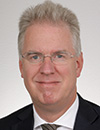Nonverbal Communication Expert to Keynote ACFE Canadian Fraud Conference
/AN INTERVIEW WITH
Christine Gagnon
Nonverbal Communication Expert and keynote speaker at the upcoming 2014 ACFE Canadian Fraud Conference in Toronto, September 7-10
How have you seen the study of nonverbal communication change over the past five years? Is it something that continues to evolve or do you see it as something that will always hold the same tenets?
Synergology, the study of nonverbal communication, has evolved quite a lot in the last few years. The discipline goes beyond recognition of facial expressions, the face representing a mere one-eighth of the body. Synergology now studies the whole body, scrutinizing it thoroughly. Each body part is analysed individually, as if it were a piece of a robot. Synergology uses the corporal lexicon, based on a classification of gestures.
Currently the synergology database contains tens of thousands of video sequences in support of the research. It is through this massive collection of real-life situational videos that synergologists have understood and underlined the importance of contextual embedding – in other words, the meaning of the same movement may be different in different situations. It should, therefore, be made perfectly clear that it is never enough to make a judgment based on one isolated gesture. Analysing only one gesture without considering other indicators can lead an observer to an unjustified conclusion. Seeing gestures as a coordinated system of signals is what sets synergology apart from other nonverbal communication assessment techniques.
This video database allows us to structure the nonverbal information it provides, to compare the same gesture done in different contexts, to control the nonverbal information by analysing the logical chain of events and finally, to witness the same gesture over and over again while cross-referencing it with other videos in order to reinforce its significance. Videos are added daily on our server, allowing us to validate or reject the connotation or sense given to a gesture.
Our students undertake preliminary work for dozens of research projects every year. Those results are taken to the next level of research if the findings are relevant and interesting. Investigators, psychologists, doctors and other specialists studying synergology conduct that research. Here are a few examples of preliminary research done by our students: Is it possible to detect whether or not a person is carrying a concealed weapon by analysing their body language? What are the main differences in the body language of guilty and non-guilty suspects when left alone during an interrogation? Are there nonverbal gestures indicating an upcoming confession. Is it possible to detect a particular body language according to the drug used? Etc.
One of our faculty members, Don Rabon, spoke at our recent U.S. conference about an upcoming trend that may affect the investigative interviewing process: the use of video interviews via Skype and other technologies. He warned that video interviews may cost interviewers valuable information gleaned from nonverbal cues and communication. How do you see technology like this playing a role in interviewing in the future?
To me, there are positive as well as negative aspects in using this technology. The communication is altered by the presence of a camera in a negative way. The answer to the question, “Are you comfortable in front of a camera?” is generally, “No.” Imagine a person being interrogated on top of it! The first part of an interrogation, called the small talk, is very important. It is where the interrogator creates a bond with the suspect and also where the suspect's basic body language is analysed. It is the starting point, the base on which it will be possible to detect changes when the suspect doesn't want to talk about a particular subject. The added stress of the camera will make the changes in the body language that much harder to detect. Also, the investigator will not see the whole gesture, body or environment, which may influence the interpretation of the gestures. However, if the interview is filmed for other reasons, such as being filed, it is then possible to review it in further detail to analyse it more carefully.
What do you most hope attendees will take away from your address?
My address is entitled “How to Manage Interviews and Question According to Gestures.” The most difficult part in synergology is to observe while holding a conversation -- see a gesture, analyse it and then find the right question to introduce the subject without being intrusive, thus jeopardizing the communication. My first goal with the attendees will be to reach the first step and detect the gesture, then find the right question to ask, and finally, to get them to act quickly in order to confirm or deny their impression. It will then be up to them to practice and improve their interview techniques though experience.
Read more about Gagnon and other keynote speakers at ACFE.com/Canadian. Register by August 15 to save CAD 100.

